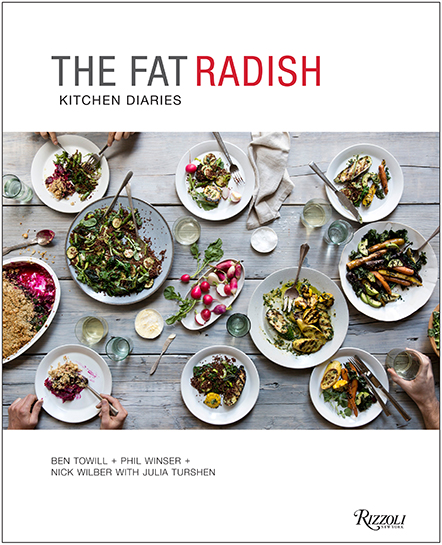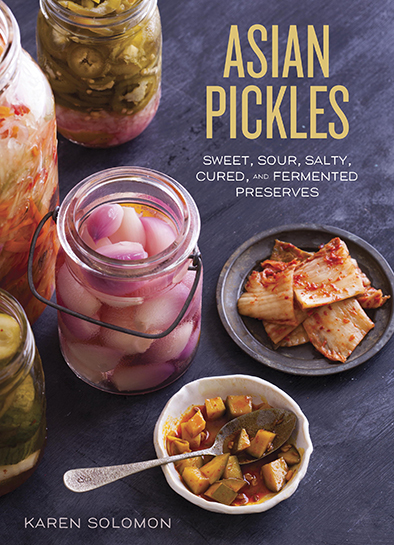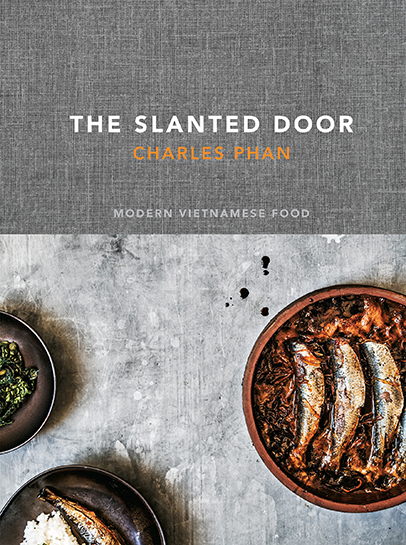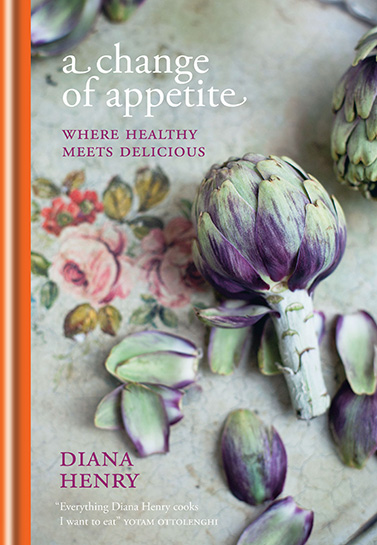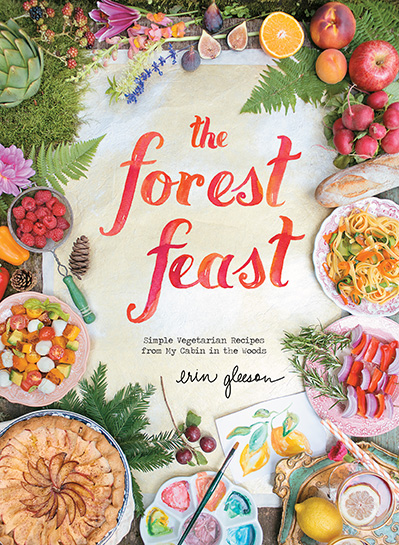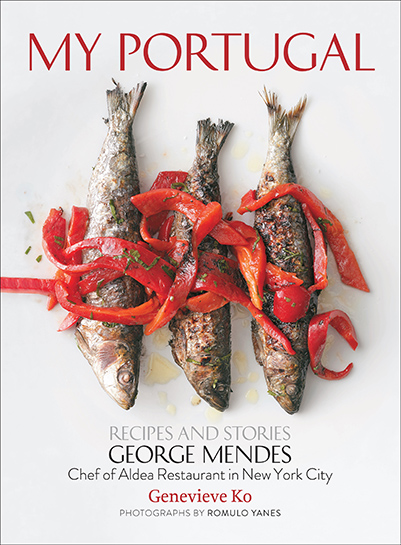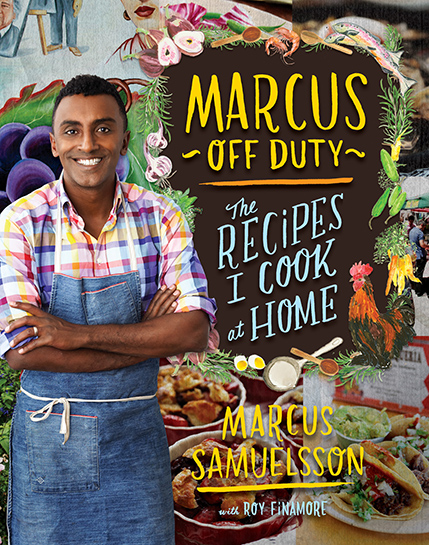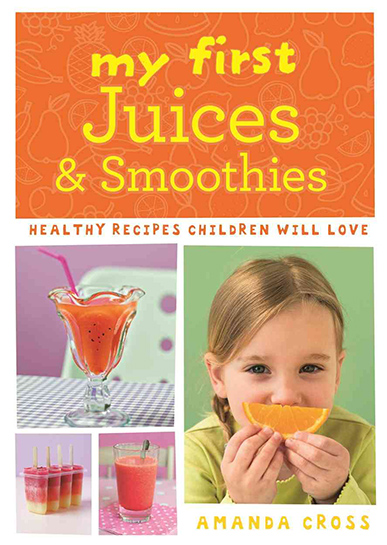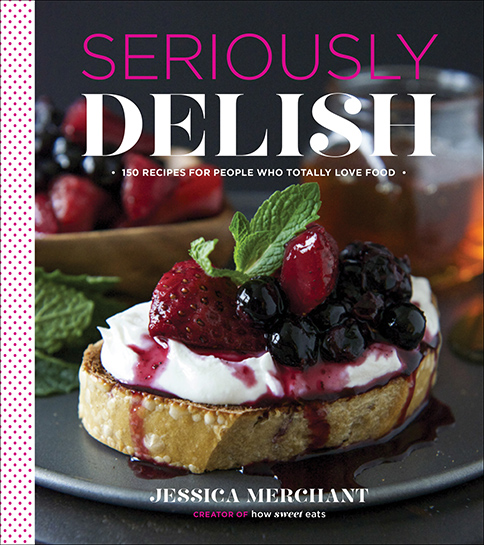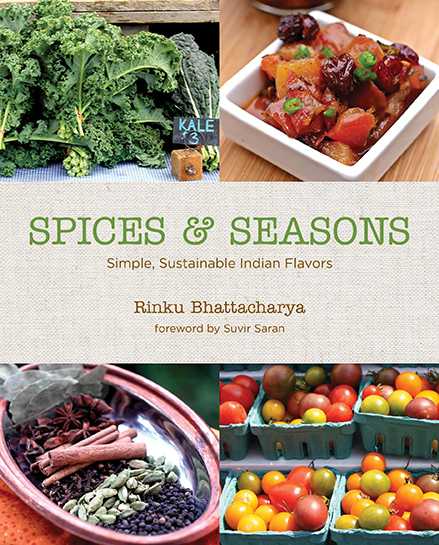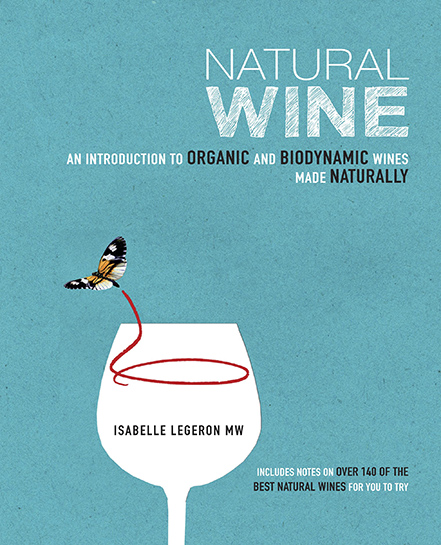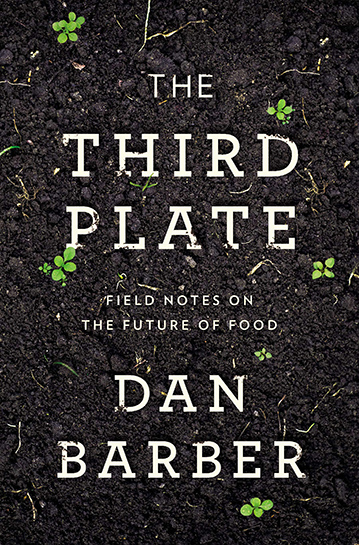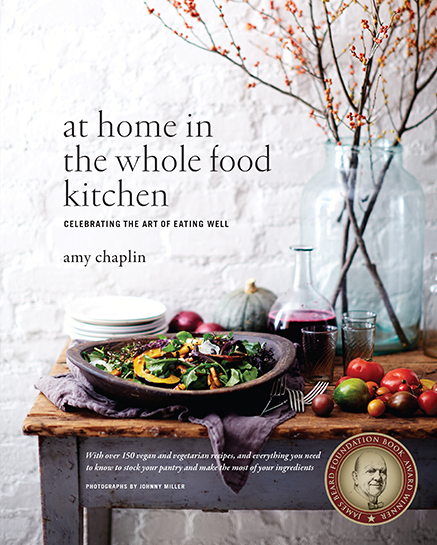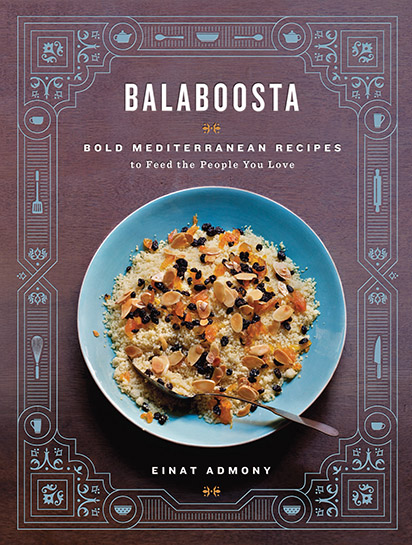Cream of the Crop: Notable Cookbooks for 2014
Cookbooks don’t pair well with doctrine. Thus it is a pleasure to report that this year’s best have broken with the past. There is less dictating of ideology about how and what we should eat. There’s more widespread recognition that our cuisine springs from a melting pot not just of flavors but of multiple trends.
The vegans, raw foodists, locavores and others have all simmered down a bit. Or have we sensibly adapted to their influence? We’re a little bit more vegan than we used to be, as evidenced by the popularity of food writer Mark Bittman’s “vegan before 6 pm” philosophy. We’re eating more locally as indicated by booming farmers’ markets. We haven’t rejected raw foods out of hand, but recognize that individuals' genetic histories determine who might benefit most from ignoring the discovery of fire.
Nutritious food has become even more appealing to the palate. This year’s notable cookbooks showcase this influence. “The Fat Radish” is filled with recipes using farm-stand ingredients taking on simple, yet gourmet treatments. Diana Henry, author of “A Change of Appetite,” has rethought the use of “refined carbs” or simple sugars, the result being many vegetable dishes and some fish and chicken recipes offering a bouquet of tastes that borrow selectively from multiple cuisines.
As for “Forest Feast,” for starters I can say: corn and cauliflower tacos, carrot and zucchini ribbon pasta and kale Caesar.
As for other noteworthy movements like molecular gastronomy and foraging, there are just so many hours in a day. Yet these pathways have made us more intrepid and knowledgeable even when we lack the time for scavaging a forest or rearranging ingredients as we would chemical compounds to trick the palate.
Food may be a ripe topic for those who like to harp, whether it’s the imperative to indulge more or to indulge less, to consume more humanely, or to be more considerate of the ways our bodies digest food. Whether the recipes adhere to restrictions on diet or ingredient sourcing or just celebrate the bounty, this year’s cookbook crop offers something acceptable to all: new configurations of ingredients, new iterations of old recipes, and many fast, easy-to-source recipes that make great meals.
One warning: As we tested and tasted, we saw lots of great recipes, but also an increase in instructional errors. Too many cooks can spoil the broth, but there may be no such thing as too many editors.
OR ….broth, but an extra editorial check can minimize kitchen disappointment.
Notable Cookbooks:
1. The author-owners and chefs at Fat Radish in New York City brilliantly prove that mainly vegetarian recipes taste great as long as ingredients includes some butter and bacon. In “The Fat Radish Kitchen Diaries” the cookbook, there’s also a small supporting role for fish, sausage and an occasional red meat. A huge plus for many of the side dishes and condiments is that they can be made ahead of time. We loved the trout with chamomile dressing (the tea bags can supply the chamomile flowers), the sweet pea pot pie and the birch muesli, which is sweet and terrific without refined sugar. They balance goat cheese and parmesan with kale in a terrific muffin recipe. Caution: the typeface is too pale and compressed to read easily, but photos are drool-worthy.
2. “Asian Pickles” elevates recipes you already enjoy making by adding pickles, sauces and condiments. You know how to make a chicken, but you’re not up for a new recipe. Why not add ginger chutney? You know how to make rice. Add sweet red pepper murabba that you can make ahead of time and store for a week so it doesn’t mess with your kitchen routine. Banana ketchup? No added sugar. Who outside the Philippines has heard of it?
3. With some caution I recommend “The Slanted Door.” I’m not sure the book needs three separate recipes for spring rolls other than to flaunt beautiful photos. There are occasional quality control problems. For instance the intro to Banh-Bot Loc (tapioca dumplings in banana leaves) describes the dough as made with rice and tapioca flours but the actual recipe calls for wheat and tapioca. (No rice appears in the ingredient list.) But these are slight defects. Instructions are clear, photos exquisite and Vietnamese cuisine is well worth exporting. These people were doing fusion cooking when the French controlled Indochina. It may be the best of France’s legacy there. Chef Charles Pan’s recipes are a special delight to gluten-free eaters.
4. Diana Henry changed her diet last year, going for a lighter cuisine and another successful cookbook, “A Change of Appetite.” As always her recipes offer a lot of explanation and advise. “Lighter” is a relative term; but the book is not all salads and fruits.. Almost every recipe combines ingredients you wouldn’t be expecting together and the outcomes are great. Chile is a common ingredient but always in surprising ways. Check out her carrot and daikon salad with peanut-chile dressing or the squid with couscous, chile, mint and lemon. A Peruvian chicken soup, yes, with chile, will put Jewish grandmothers on notice.
5. You’ll feel satiated and quite knowledgeable about Portugal—both the country and the cuisine—by the time you finish reading “My Portugal.” .Some of the recipes require equipment such as an immersion brine circulator for softening a tough lamb shoulder, and not all recipes, like spiced pork belly cracklins, are heart-healthy. But there are many others that combine common ingredients in uncommon ways, such as the octopus and black-eyed pea salad and the shrimp and okra with piri piri sauce. Your palate doesn’t just travel to Portugal but also to former Portuguese colonies such as Mozambique.
6. Wondering what to serve at the party? “The Forest Feast” is a cookbook of simple vegetarian recipes from the author’s “cabin in the woods.” Author, Erin Gleeson, clearly doesn’t believe vegetarians should suffer. Try the beer-battered artichoke hearts for instance, or the crispy broccoli tossed with blue cheese. Ever wonder what to do with the rest of those expensive sage leaves once you’ve used some for a recipe? Sage chips! Drop the leaves into hot oil until slightly browned, cool and sprinkle with salt. The author taught photography at Fashion Institute of Technology and the ingredients and finished dishes are magnificently pictured.
7. You can’t pin down Marcus Samuelsson’s culinary influences. It’s partly because of his creativity and partly due to his upbringing. He’s Ethiopian, adopted by Swedish parents, and now has a highly-respected restaurant in New York City’s Harlem. But he also seems to have an insatiable curiosity about ingredient cross-pollination. After delving into “Off-Duty: Recipes I Cook at Home,” I certainly would enjoy living at his place. New Englanders will appreciate his inventive vinaigrettes for fish, shrimp and lobster. The book includes curries, pasta, chutneys and and the best mac and cheese I’ve ever had. These are recipes you’d expect to find in a restaurant but can be made at home.
8. Every actor is afraid of being upstaged by a child, that should go double for cookbook writers. “My First Juices & Smoothies,” is a compact children’s recipe book filled with easy-to-follow, enticing concoctions. The average recipe length is about four ingredients. One, the “Red Devil” is a simple combo of watermelon and raspberries. Nearly all are without any added sweeteners. But what child won’t be attracted to a Belly Tickler made with apples, blueberries and currants or a Hug in a Glass of oranges, apple, pear and a little honey? How do you get a kid to eat celery sticks, tart apples and alfalfa sprouts? Juice them into a Green Dream. Commendably, the book lacks any “drink your juice, it’s good for you” tone.
9. Jessica Merchant’s dedication to “Seriously Delish” reads: “For my mom, who taught me about bacon. And therefore, taught me about life.” That kinda sets the tone. Most of the recipes are not really threats to your health. While butter, Parmesan cheese, bacon and sugar come to the rescue in some, others are downright clever. There’s chorizo and balsamic Brussels sprouts nachos and a blueberry-basil brie. But the highlight of decadence and originality is the chocolate and toasted coconut quinoa parfait. Merchant is probably the first to note that quinoa and chocolate provides everything the body needs to make proteins. “It’s a health food!”
10. Rinku Bhattacharya recipes in “Spices & Seasons,” are well detailed, flavorful and (contrary to most views of Indian cuisine) have short prep and cooking times. To get the most out of a fish and meat recipe, however, you may have to marinate ingredients at least for a few hours. The book’s title is a misnomer. She avoids strictly organizing the book by seasons because they differ around the world and while there is a great deal of detail about spices and oils the recipes comprise most of the book. Indian dishes are often gluten-free, vegetarian or vegan and recipes are labeled accordingly. New Englanders can locally source almost all ingredients. Even goat, the most common meat in India, is available here (lamb is the normal substitute). The recipes tend toward South Indian and Bengali fare. Not exactly an Indian dish but much welcomed is brined turkey with a pomegranate apricot glaze. One piece of interesting advice: the author prefers grape seed oil in many recipes for its mild taste and high burn point to olive oil or to the Indian staple, canola.
Notable Culinary Reads:
1. Take a bunch of grapes, stomp on them and stick them into a barrel to ferment. No. Wait. That’s a recipe for making natural wine and this isn’t really a recipe book. “Natural Wine,” is a down-to-earth, wide-ranging informative primer on how wines are made today and how they used to be made, what used to be in them, what’s in them now, why the ancient formulas have changed and whether it’s for the better. Isabelle Legeron is a plain-talking wine expert who does not display her superior knowledge of noses, bouquets, body, fruity notes and so forth. The book includes a guide to 140 natural wines you might like. Whether you go natural or not, you’ll learn a lot.
2. In "The Third Plate,” noted locavore Dan Barber re-imagines the farm once again. Organic? Sure. But he and the farmers he interviews talk about the practical issues: grow for taste (often using heirloom seed stock) and you can command a price premium. But flavor comes from a balanced nature. Grow corn, beans and squash together and they mesh compactly -- lots of food per acre -- and they also balance demands on the soil. Corn takes nitrogen out; legumes put it back. The beans climb on the corn stalk, too. At the restaurant end, stop thinking about a menu of supposedly balanced plates and give customers a list of things you have in the kitchen.
Rachel Ellner’s first cookbook, “10 Superb Granola Recipes: Small Batch, Gluten-Free, Naturally Sweetened,” is available on Kindle at Amazon.com. She can be reached at rellner@gmail.com.
